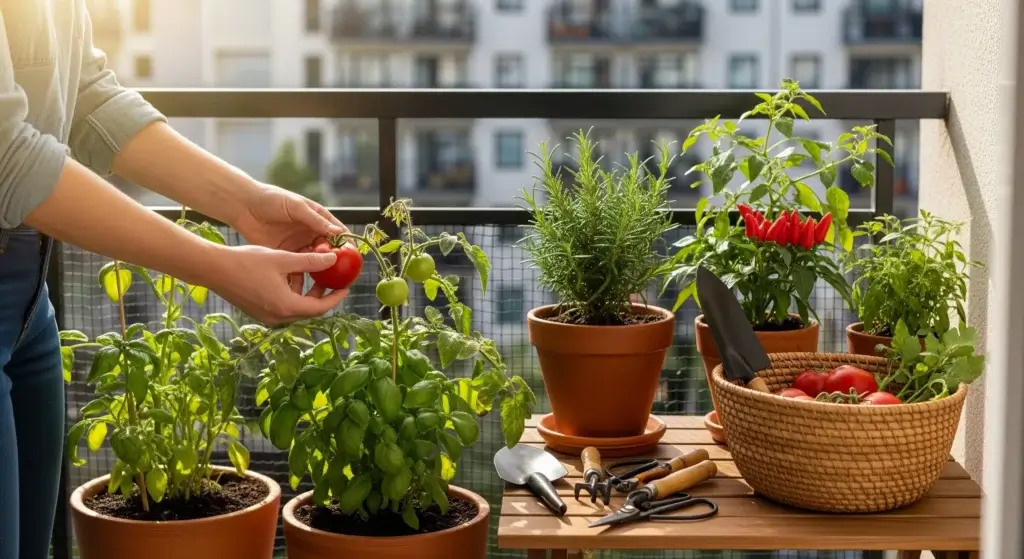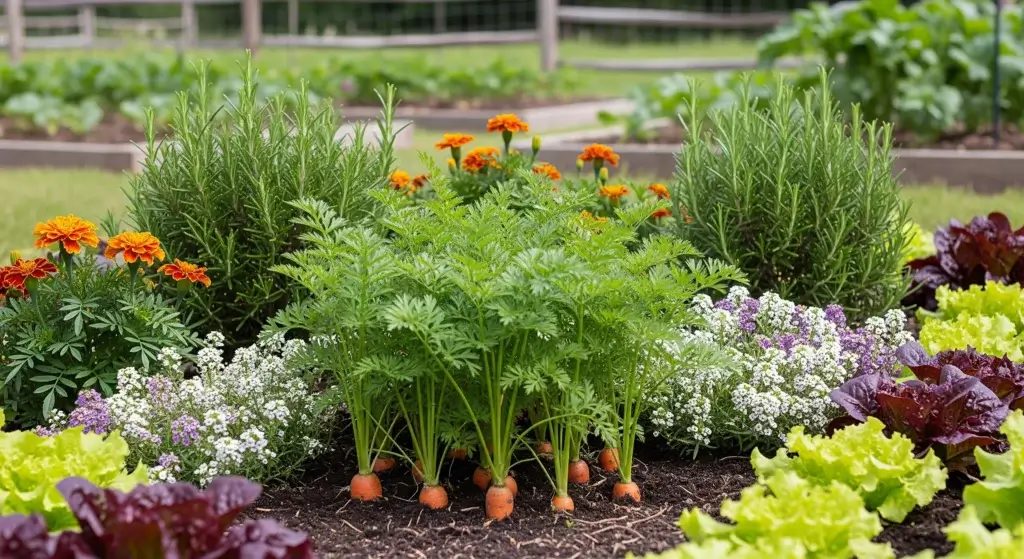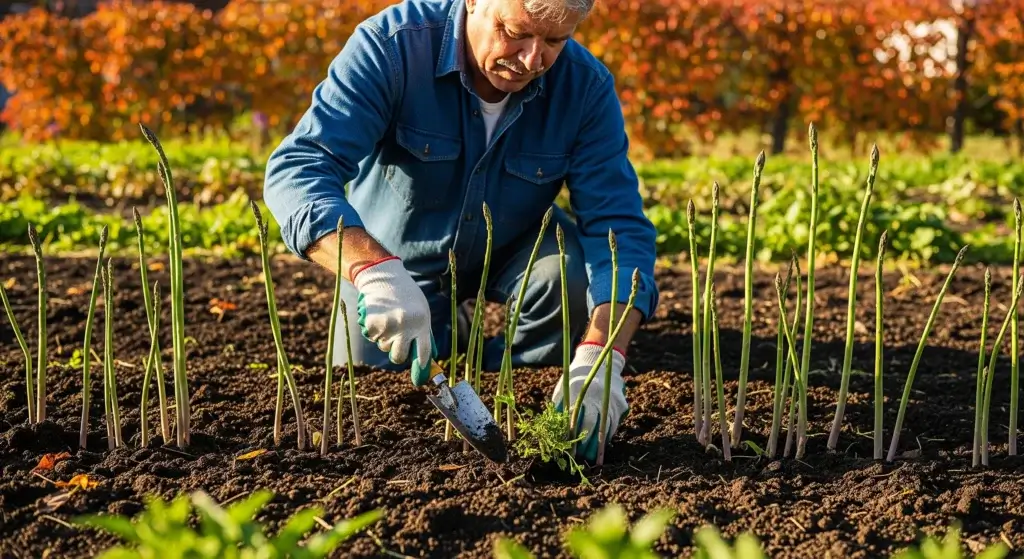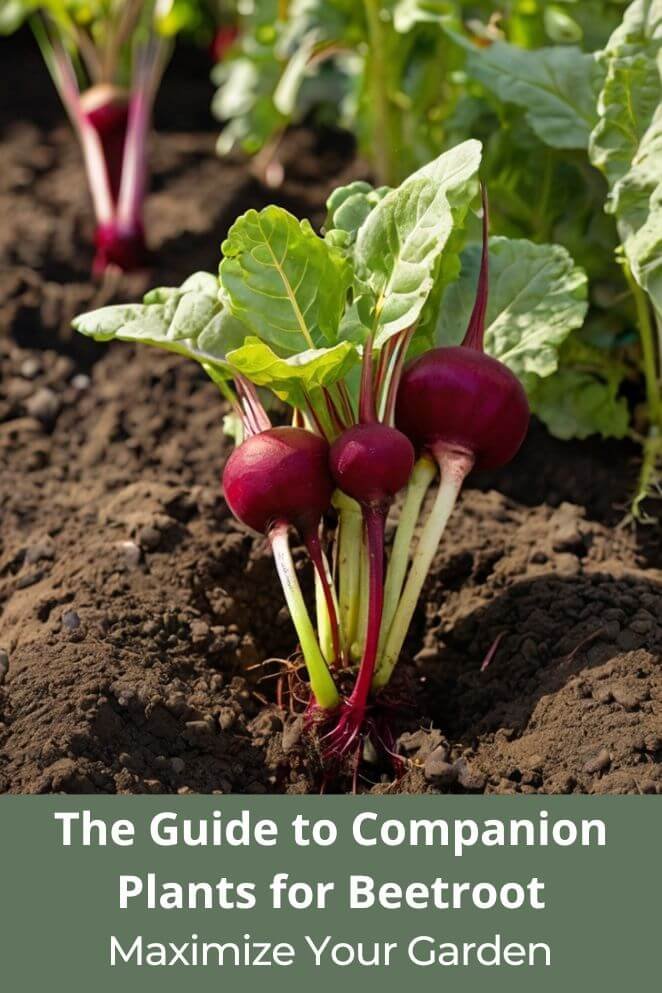
Growing great beetroot isn’t just about planting and hoping for the best—it’s about smart strategy.
One of the best hacks? Companion planting.
Think of it as matchmaking for your garden: pairing beets with plants that help them thrive by fighting pests, boosting nutrients, and making better use of space.
Whether you’re new to growing or already knee-deep in compost, learning which plants vibe with beetroot can seriously upgrade your harvest.
This guide breaks down the top beetroot buddies, why they work, and how to use companion planting to grow a healthier, more productive garden—without going full farm mode.
Understanding Companion Planting: The Science Behind Plant Partnerships
Companion planting isn’t just an old-school garden myth—it’s backed by science and centuries of trial and error.
Here’s why it works and why your beets will thank you:
Nutrient complementarity
Think of plants like roommates with different schedules.
Beets grow deep roots to grab nutrients down low.
Pair them with shallow-rooted plants that snack from the topsoil, and nobody’s fighting over the fridge.
Natural pest management
Some plants are like natural bug repellents.
Others act like decoys or call in beneficial bugs to handle the bad guys.
Surround your beets with these allies, and you’ll cut way down on the need for sprays. It’s like giving your garden its own tiny security team.
Soil improvement
Legumes (like peas or beans) are your soil’s hype squad—they actually pull nitrogen from the air and feed it into the soil.
Beets love that. It’s like free fertilizer without the bag.
Space optimization
By mixing plants with different shapes, sizes, and grow speeds, you make the most of every inch.
It’s like turning your garden into a well-designed tiny home—no wasted space, just smart layout.
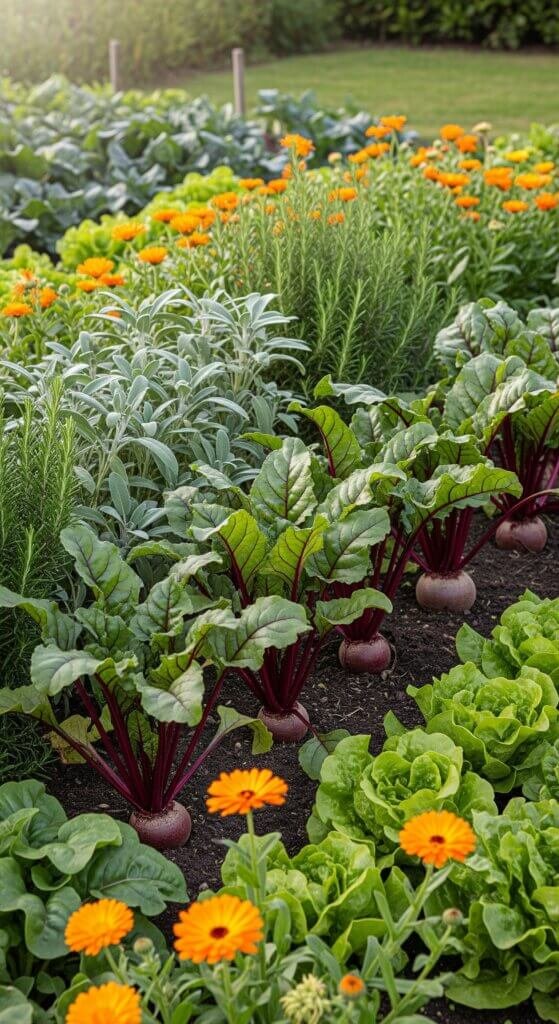
Best Companion Plants for Beetroot
Want to help your beets thrive? Plant them with the right garden buddies.
Here’s the beetroot companion dream team—and why they work:
Brassicas (cabbage, broccoli, cauliflower)
Beets and brassicas get along great. Brassicas have shallow roots, so they don’t fight beets for space underground.
Plus, their big leaves offer some shade on hot days. Bonus: beet leaves help mask the scent of brassicas, confusing pests like cabbage worms.
It’s mutual support, garden-style.
Alliums (onions, garlic, chives)
These guys repel pests like aphids and spider mites with their strong smell—think of it as organic bug spray.
They grow straight and narrow, so they slot in easily between beet rows without stealing space or nutrients. Win-win.
Lettuce, spinach, arugula
These leafy greens grow quickly and don’t need deep roots.
Plant them next to beets, harvest them early, and you’ve freed up space before your beets even bulk up.
Their leaves also shade the soil, holding moisture and blocking weeds—a natural mulch situation.
Radishes
Radishes grow fast—like, harvest-in-a-month fast—so they don’t crowd your beets.
They also loosen up compact soil, which helps beets grow those nice round roots. Some bugs even go for radishes instead, sparing your beets.
Think of them as the decoy in the action movie.
Beans and peas
These legumes pull nitrogen from the air and put it in the soil, giving your beets a free snack.
Plus, they grow up rather than out, so you get vertical gains without crowding your garden bed.
Herbs (dill, parsley, chervil)
These herbs pull double duty—they attract helpful insects that eat beet pests and add flavor to your meals.
Dill, especially, may even make your beets taste better.
Plus, the feathery textures break up the leafy green look for some visual flair.
Plants to Avoid Near Beetroot
Not all plants play nice with beetroot.
A few can cause more drama than they’re worth—here’s who to keep out of the beetroot neighborhood:
Pole beans
Unlike bush beans, pole beans stretch tall and wide.
They hog sunlight and compete for nutrients—basically stealing your beets’ lunch and blocking their view. It’s too much.
Save the vertical real estate for another part of the garden.
Fennel
Fennel may look innocent, but it’s secretly toxic to other plants.
It releases chemicals into the soil that mess with beetroot’s growth.
Think of it like that one coworker who ruins the vibe without saying much—just keep it far away.
Mustard greens
Even though mustard greens are part of the brassica family, they come with baggage.
They attract the kind of pests (hello, flea beetles) that love to snack on beetroot too.
It’s like inviting trouble over for dinner and hoping it doesn’t stay.
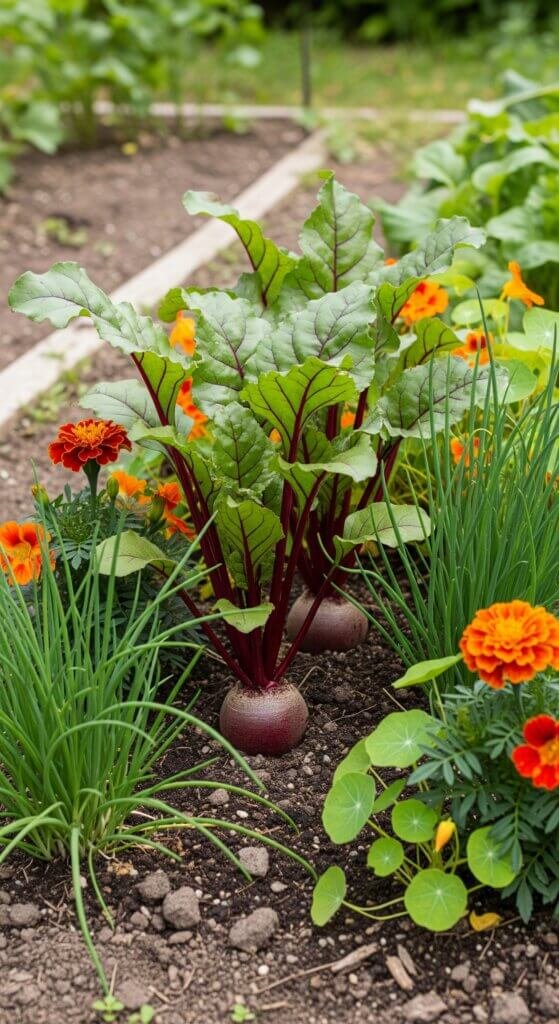
Implementing Companion Planting in Your Garden
Ready to level up your beetroot game with companion planting?
Here’s how to actually make it work in your garden—no guesswork, no chaos:
Planning your layout
Before you plant anything, sketch it out.
Think about how big each plant gets, how fast it grows, and when you’ll harvest it.
Give your beets and their buddies enough space to thrive—don’t cram them in like a subway at rush hour.
Timing your plantings
Plant your fast growers—like radishes and lettuce—at the same time as your beets.
They’ll do their thing early and be out of the way before your beets need room.
Save the slower growers like broccoli or cabbage for a couple weeks later so everyone has space to stretch.
Succession planting strategies
Don’t plant everything at once and call it a season. Sow new crops every 2–3 weeks.
As you pull out quick growers, drop in new seeds to keep the benefits going—shade, soil coverage, pest control.
It’s like crop rotation but on fast-forward.
Seasonal considerations
Your strategy should flex with the weather.
In summer, lean on shade-makers like lettuce to keep the soil cool and moist.
In cooler months, go for plants that block wind or stretch the season—like leafy greens that can handle a chill.
Maintenance Tips for Companion Planted Gardens
Keeping a companion-planted garden running smoothly takes a little extra love—but it’s totally worth it.
Here’s how to stay on top of the maintenance without losing your mind:
Watering management
Different plants = different thirst levels.
Set up drip irrigation or soaker hoses so everyone gets steady moisture without drowning the picky ones.
Check your soil regularly—don’t just guess.
Adjust your watering depending on the weather and how your plants are looking.
It’s like running a hydration station for your garden crew.
Nutrient management
Companion plants can help boost the soil, but they also share the buffet.
Do a soil test once a year to see what’s missing, and add compost to keep things balanced.
Focus on feeding the soil, not just the plants—kind of like cooking a solid base meal instead of handing out snacks.
Pest and disease monitoring
Yes, companion planting helps with pests, but it’s not foolproof.
Walk through your garden once a week and look for bug damage, weird spots, or anything off.
Because with all that plant diversity, it’s easy to miss stuff hiding in plain sight.
Catch issues early, and you’ll avoid a full-blown garden meltdown.

Conclusion: Cultivating Success Through Plant Partnerships
Companion planting with beetroot isn’t just smart gardening—it’s working with nature, not against it.
By pairing beets with the right plant buddies, you boost your harvest, fight pests naturally, and build healthier soil.
Start simple: try classics like beets with lettuce or onions.
As you get more comfortable, mix and match based on what works in your space.
Keep notes, tweak your combos, and don’t be afraid to experiment—every garden has its own personality.
In the end, you’re not just growing veggies. You’re building a mini ecosystem that gets better every season.
Whether your garden’s big or small, these plant partnerships make your beetroot game stronger, more sustainable, and way more fun.

